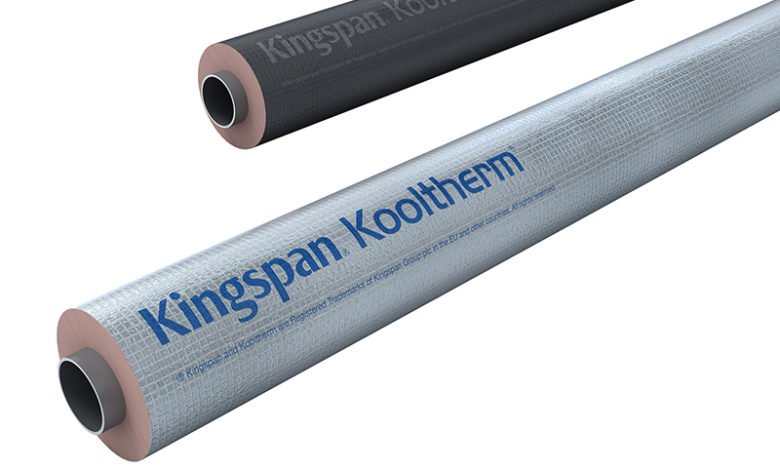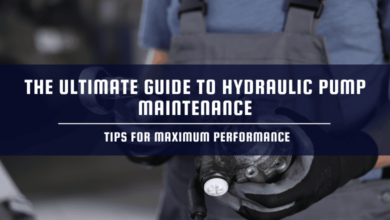A Homeowner Guide To Pipe Insulation – What’s Right For You?

As a homeowner, you’re responsible for preparing your house for winter, as well as outdoor activities. Similar to the way you care for your lawnmowers and your vehicle along with your home, as well as other items that are subject to harsh winter weather, you can find strategies to safeguard your house.
Pipe insulation within the outdoors is an important job that will provide protection for your home and can also assist in avoiding costly repairs and damage. This guide to Rockwool pipe insulation will help you understand the effects of frigid temperatures on your pipes, and how to prevent the harm caused by the ice.
What Can Freezing Temperatures Do to Your Pipes? Impact Your Pipes?
The frigid temperatures could cause serious damage to the pipes that are in your home. When the water cools within the pipes and expands, the material of your pipes expands. Even if the pipes don’t explode, they can be damage by the freezing. Here are some ways winter weather can harm the plumbing of your home:
- The expansion of ice weakens the water line, making it more prone to leaks.
- The faucets freeze outside, and the internal mechanisms fail, and they cease to function.
- Leaky valves and faucets typically cause the subsequent melting.
You might be familiar with the valves and faucets that control your garden sprinklers and hoses, but there’s likely to be a myriad of ductwork insulation that connect to the indoor plumbing system that you might not know about. The process of locating these pipes and putting in the proper outdoor pipe insulation can help you avoid any damage to your house.
Outdoor Pipe Insulation Types
Your dry material lining is composed of various plumbing components and pipes of various sizes and shapes. There is numerous duct insulation that can be used outdoors and various insulation products you need to install your plumbing system outside to be prepared for winter.
Some of the most frequently used plumbing insulation products are made by major brands, like frost tubes produced by Rockwool. It is possible to think of any of these plumbing insulation items to complete your pipe insulation project for outdoor pipes.
- Faucet Insulators to protect outdoor faucets, or Covers
- Foam Insulation Tape
- The Pipe Insulation made of Polyethylene (foam cover for pipes)
- Fibreglass Pipe Insulation
- Rubber Insulation
The All-In-One-Guide to Outside Pipe Insulation
Pipes that are outdoors and exposed or exposed to the effects of freezing temperatures are susceptible to damage. Locating the elements that cause damage and installing the most durable outdoor pipe insulation is the most effective way to protect your pipes from freezing and bursting as winter’s extreme temperatures start to creep in.
If you’ve recently moved to a region with colder temperatures than you’re accustomed to, you should seek help. Your plumber or the local store employee at home improvement will provide you with more information about local methods for insulation of your water pipes. They will also tell you what R-value or isolative value your pipes will require.
The Steps Below Will Assist You To Complete The Procedure
1. Clean And Save Garden Hoses
You’re unlikely to make use of your garden hoses when temperatures are low and exposure to harsh winter elements can damage or cause damage to the hoses. Instead, you should remove and put away your garden hoses in your shed or garage or even in the basement.
- Take these actions to prepare your garden hose to be winter-ready
- Take your water hose off the water supply within your outdoor space.
- Untangle the hose, and then extend it over the ground.
- Let the water flow completely through the hose.
- It is recommended to roll the hose up and then place it in a secure place to store it for winter.
2. The Outdoor Faucets
Your waterproof pipe insulation could have small amounts of water which can cause damage and even freeze when temperatures drop during winter. To avoid costly damage you’ll have to dispose of all water in the faucets in your outdoor area.
While outdoor plumbing systems are different, the process is the same. Use these tips for flushing your faucets outside in order to get ready for winter.
Shut off your water supply to the outside faucets. Certain houses have an in-house shutoff device which is inside your house. If not, it’s recommended to locate a shut-off device at the point where the line connects to the faucet (often located in the crawlspace or basement).
The water that is not being used should be eliminate by shutting out the drain. Place a bucket under the drain cap, which shuts off. Then, lift the drain cap, letting the water that is left to drain from the.
Take the faucet out from the outside. Keep the drain cap close and then head outdoors to the water faucet which is outside. The faucet should be turn on for use outside and allow it to dry.
3. Insulate Exposed Pipes And Work Components
Once all water has been drained and the hoses are now safe to store until winter, be aware of the components of your plumbing system that remain subject to weather conditions. This is where the pipes used for insulation for outdoor use are a great option.
Follow these steps to shield your pipes exposed, as well as faucets that are outside from the cold temperatures.
Locate the pipes that are open and cover them in self-sealing pipes for insulation. For those areas that are difficult to reach, such as elbows, or other places where you can’t reach, you may require the wrapping of additional insulation or using foam tape.
An appropriately fitted insulation cover can help safeguard faucets and hose bibs. For the best results, ensure that the cover is fitted properly and is fitted with a way to make sure it is secured to the hose.
4. Insulate Water Supply Lines
The water lines that connect to your home are typically locate in garages that are not finish or basements, which are close to the walls outside or beneath the crawl space beneath the home.
While a lot of these pipes that are outside might have to be judge as to be plumbing lines that are on the outside, they are expose to outside temperatures because they’re near walls that are not insulate on the outside or underneath your home in the basement or the crawlspace.
Insulating the supply lines will aid in avoiding most common winter plumbing issues which homeowners confront each year. In addition to preventing the formation of ice blocks on the line and burst pipes, insulation of the supply lines can offer other benefits.
Select The Insulation Methods You Like And The Insulation Material
It is possible to insulate each pipe in exterior walls by using wall insulation. Pre-slit pipe sleeves made for foam pipes are a great option to safeguard lengthy straight lines. Pipes that enter the walls may be filled with external pipe insulation products that expand when applied to fill any gaps or using the caulk rope made of foam.
Be Sure The Insulation Is Secured With Additional Tape Or Glue
The insulation sleeves of foam pipe are usually having a slit that runs in a lengthwise direction along the sleeves. The slit may also contain self-adhesive strips to close. However, if not, then you’ll have to apply tape or glue to close the gap.
Be sure that the pipe insulation expose is completely enclose by pipe wrap insulation to avoid freezing in pipes. Your insulation for your pipes outside and water supply lines which join to your systems will stop a winter storm from becoming icy.





